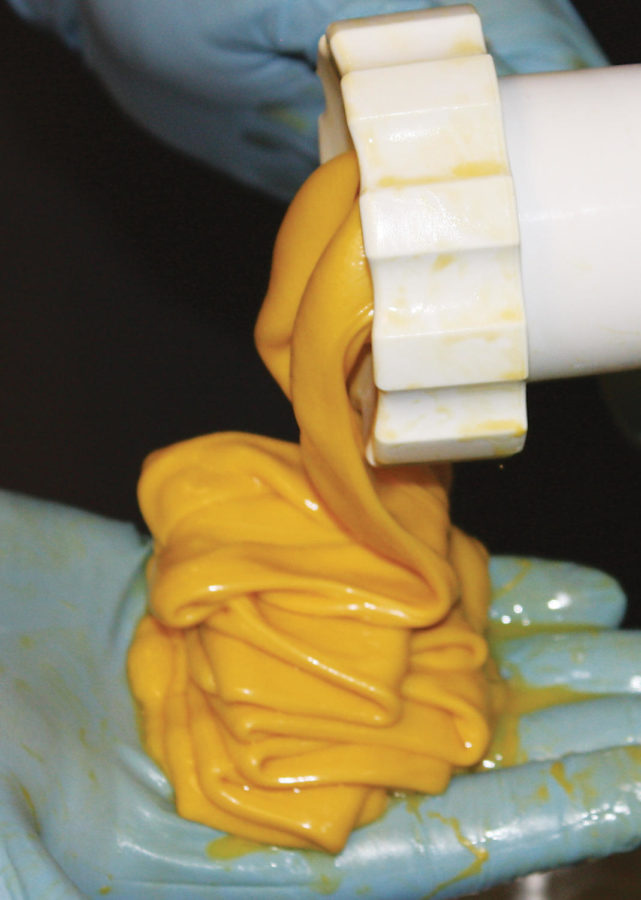Iowa State team places fourth with chewing gum
Courtesy photo: Pradeep Suriya
The gum base is being passed through an extruder to strain out excess water. After this, the gum is subjected to a stage of humidity control, called “forming”, followed by dusting with sweeteners to get the final product.
November 18, 2010
After nearly one year of obstacles, the ISU Food Product Development team’s hard work finally paid off.
The chewing gum the team developed recently placed fourth in the American Association of Cereal Chemists product development contest.
“It’s awesome,” said Stephanie Clark, associate professor of food science and human nutrition and adviser to the team. “It just says that [Iowa State] is in the top.”
The gum is environmentally friendly, consists of natural flavors and is actually nutritious.
The development process started in the fall of 2009 with a series of brainstorming sessions to determine what kind of product to develop for the contest.
The team decided it wanted to make a chewing gum that was a source of probiotics, typically found in dairy products.
“College students regularly chew gum, so it’s a good way for them to get probiotics,” said Babu Chinnasamy, graduate in food science and human nutrition.
The probiotics found in the gum have two health benefits, including better oral health and a healthier gastrointestinal system.
Another product used in the development of the chewing gum is zein, a protein found in corn.
Pradeep Suriya, graduate in food science and human nutrition, came across this ingredient by accident.
Suriya was in a food science lab one day when the protein was being used for another project. The protein was accidentally sprayed on Suriya’s hands and would not come off.
“I tried to wash my hands and it wouldn’t come off,” Suriya said.
After using ethanol to remove the protein, Suriya realized it might be of use for the gum the team was trying to develop.
Since zein is not water-soluble, it helps the gum stick together while being chewed.
Challenges the team faced while developing the gum included finding the right texture, experimenting with the way it held moisture and creating the overall flavor.
The team would put in a lot of time each week to overcome those challenges, often spending several hours in the lab.
“You have to be pretty committed to the team,” said Krista McCarty, senior in food science.
As part of the competition, the team was required to submit a written report to the AACC about the product it developed before it could move on to the national competition. Of the 30 reports submitted, only five could move on in the competition, and theirs was in the top five.
At the national competition, the team had to give an oral presentation and make a display poster about the chewing gum they developed. They also had a taste-testing session, where people could try it.
The presentation and poster session offered students the chance to interact with industry professionals and make contacts that may one day lead to internships.
“It’s a very good place to interact,” Chinnasamy said.
Suriya said several companies have shown interest in the chewing gum the team developed. He said the companies must check for patents on the use of the products in the gum before it can be sold on the market and in stores.
Whatever the future of the chewing gum, the team members gained valuable experiences developing it.
“It’s applying what you learned in classes to what you’re doing with the team,” McCarty said. “You have to enjoy doing it.”

















